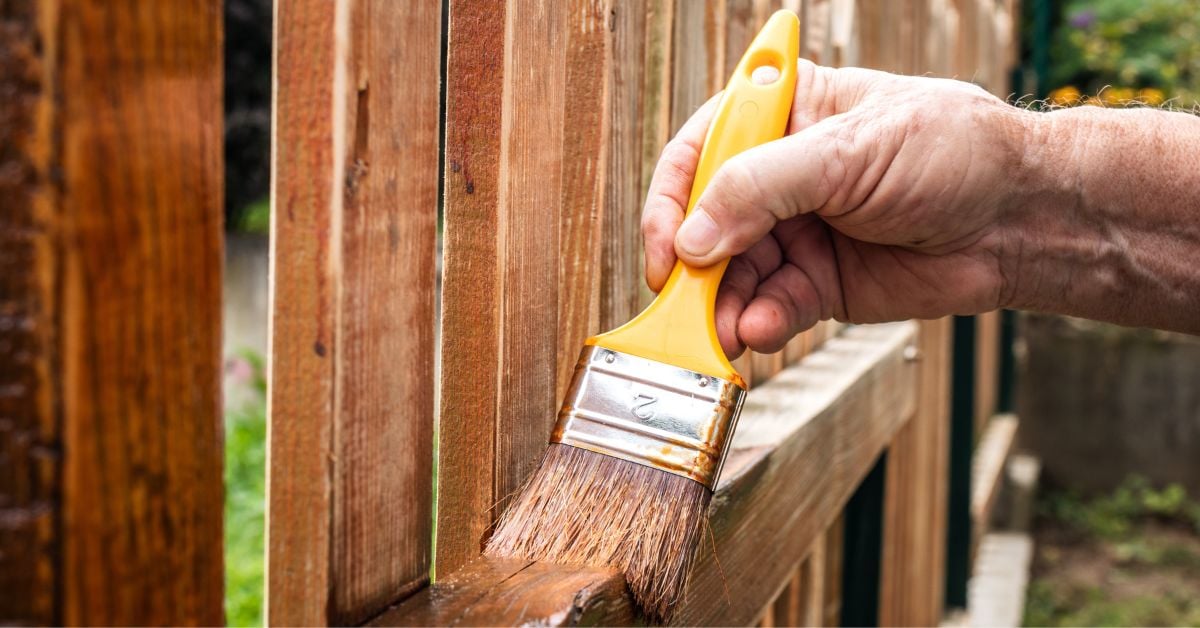As the vibrant colors of summer fade away and the leaves start to fall, it's time to turn our attention to an essential but often overlooked aspect of our homes — fence maintenance.
Preparing your fence for the coldest months is key to ensuring it withstands the harsh weather conditions. This article will delve into the importance of fence maintenance during the coldest days and provide valuable tips for maintaining different fences, including aluminum, wood, vinyl, and chainlink.
The Importance of Fence Maintenance
Protecting Your Investment
Your fence is more than just a property boundary marker; it represents a substantial investment that enhances your home's value and aesthetics. Beyond its decorative role, a well-maintained fence ensures privacy, security, and protection. Neglecting its upkeep can result in costly repairs, damage, or premature replacement, significantly impacting your budget.
Therefore, dedicating time to fence maintenance, especially during the coldest seasons, is crucial to safeguarding this valuable asset and extending its lifespan. Key maintenance tasks include inspecting for signs of damage, thorough cleaning, re-staining, repairing loose boards or posts, and trimming overgrown vegetation surrounding the fence. By undertaking these measures, you enhance the fence's durability and increase your home's resale value and overall aesthetic appeal.
Ensuring Safety
A well-maintained fence also ensures the safety of your family, pets, and visitors. Loose or damaged fence components can pose serious hazards, leading to accidents that can harm you and your loved ones. Regular fence maintenance is crucial as it helps identify and address safety concerns such as broken rails, protruding nails, and decayed wood. This proactive approach provides peace of mind during winter when hazardous weather conditions can exacerbate any pre-existing issues.
How to Maintain an Aluminum Fence
To help you prepare your aluminum fence for winter and keep it looking great year-round, we've put together some maintenance tips. Whether you're dealing with snow, ice, or simply colder temperatures, these tips will help you protect your investment:
1. Clean Thoroughly
To start, take a mild detergent and mix it with water. Then, gently scrub your aluminum fence using a soft-bristled brush or a sponge to remove any accumulated dirt, debris, or mildew that may have built up over time. Once thoroughly cleaned your fence, rinse it off with a hose to remove any remaining soap residue and leave it refreshed and renewed.
2. Inspect for Damage
Inspect your aluminum fence regularly for damage, such as loose screws, bent pickets, chipped paint, and rust. Address any issues promptly to prevent further deterioration and maintain its longevity. Tighten screws, replace pickets, touch up paint, or use a rust converter when necessary to keep your fence in top condition.
3. Apply a Protective Coating
Protecting your aluminum fence is crucial to keeping it in top condition, especially during winter. Applying a specialized coating can create a barrier against moisture and harsh elements, helping to preserve its shine and durability for years to come. Don't leave your fence vulnerable to the damaging effects of winter weather - take action now to safeguard it with a protective coating.
How to Maintain a Wood Fence
Wooden fences lend a timeless charm to any property but require more maintenance than other materials. Here's how to prepare your wood fence for winter:
1. Clean and Seal
To keep it in pristine condition, cleaning it to remove any dirt and debris thoroughly is essential. Once it's clean and dry, consider applying a high-quality wood sealant or stain to protect it from moisture, harsh sunlight, and harsh winter weather. Not only will this help to maintain the fence's natural beauty, but it will also prolong its lifespan and keep it looking great.
2. Repair Damaged Areas
To ensure the longevity of your wood fence, it is crucial to conduct regular inspections for any signs of rot, cracks, or loose boards. If any of these issues are identified, it is essential to promptly replace or repair the damaged sections to prevent further deterioration and ensure your fence remains sturdy and secure. By taking these proactive measures, you can maintain the appearance and functionality of your fence for years to come.
3. Trim Nearby Foliage
To protect your wood fence during winter storms, it's important to trim any overhanging branches or shrubs that may cause damage or accumulate excess moisture. Regularly maintaining the vegetation near your fence will prevent it from becoming a hazard and prolong the life of your fence.
How to Maintain a Vinyl Fence
Vinyl fences are renowned for their minimal upkeep. Yet, they still benefit from specific care to ensure they remain pristine throughout the winter. Discover the following essential maintenance tips:
1. Clean and Inspect
Maintaining your vinyl fence's cleanliness is crucial in keeping it looking its best. You can use a gentle soap solution and a soft brush to remove any dirt or grime accumulated over time. Inspect your fence regularly for any signs of cracks or loose components that might compromise its structural integrity. Even though vinyl fences are known for their durability, addressing issues early on can help prevent more significant problems.
2. Lubricate Hardware
To ensure your vinyl fence remains functional during cold weather, lubricate any moving parts, such as hinges and locks. Doing so will prevent these parts from freezing and becoming difficult to operate, allowing you to access your property without issues.
How to Maintain a Chainlink Fence
Chainlink fences are sturdy and versatile, making them popular for various applications. Here's how to ensure they remain in good condition for the winter.
1. Remove Rust
Before winter’s onset, it's essential to inspect your chainlink fences regularly for any rust spots. If you notice any signs of rust, you can remove it quickly using a wire brush. Once you have removed all the rust, it's a good idea to apply a rust-resistant coating to prevent further corrosion and ensure your fence lasts for years.
2. Tighten Loose Parts
Also, inspect your fence thoroughly to ensure its stability and durability. Check for any loose nuts, bolts, or tension bands that may have become compromised over time, and tighten them as necessary. This will help prevent damage caused by strong winter winds and heavy snowfall, ensuring your fence remains sturdy and secure throughout the season.
3. Clear Vegetation
In addition, to keep your chainlink fence in good condition, it is essential to regularly clear away any vegetation, debris, or other objects that may become entangled in it. This helps prevent damage to the fence and ensures it functions properly and looks its best.
Proper fence maintenance before the fall and winter arrive is essential to protect your investment, ensure safety, and enhance curb appeal. Whether you have an aluminum, wood, vinyl, or chainlink fence, following these maintenance tips will help you confidently weather the winter. Take the time now; your fence will thank you by standing strong and beautiful through the cold season.
Ready to ensure your fence stays in top shape this winter? Contact HOA Fence today for expert assistance and personalized maintenance advice!



